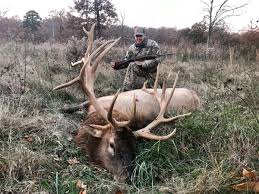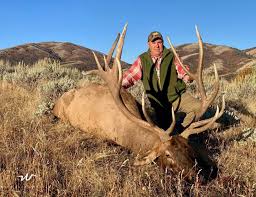In the vast expanses of the American wilderness, few experiences rival the thrill and challenge of elk hunting. As the majestic creatures roam through rugged terrain, hunters from across the globe are drawn to the pursuit of this iconic species. However, navigating the complexities of elk hunting requires skill, knowledge, and often, expert guidance. This is where guided elk hunts come into play, offering enthusiasts an unparalleled opportunity to embark on an adventure of a lifetime.
CHOOSE ALBERTA FOR YOUR ELK HUNT
Alberta has a growing population of elk that numbers in the neighborhood of 26,000 animals. They are found predominately along the eastern shadow of the Rocky Mountains in the high basins and foothills, although, in recent years, they have been expanding their range into the boreal forest and parkland regions.
SIX-POINT OR BETTER BULLS
Alberta Elk mature quickly.
Non-residents are only permitted to shoot six-point or better bulls in most zones and this management regime allow the majority of bulls to reach maturity, resulting in a higher than guided elk hunts average number of trophy bulls. Alberta’s elk mature quickly and it is not uncommon for three-year-old bulls to sport 6×6 racks.
Elk hunting begins in late August and early September with the archery season. Archery hunting is permitted in most zones prior to the rifle season and there are two archery-only zones in the province. Many of the rifle seasons open in mid-September and stretch until the end of November, and a couple of zones extend through into February.
During the early hunts, when the elk are in rut, the favored method of hunting is bugling and cow calling. The rut often lasts into mid-October.
The majority of mountain and foothill hunts are conducted from horseback and hunters will often spend several days in remote camps within close proximity of the elk herds. Hunts in the boreal forest and parkland regions utilize trucks, quads and good old-fashioned boot leather.
No matter where you hunt you are hunting during prime times, like early morning and late afternoon.
BE PREPARED FOR YOUR HUNT
Winter comes early in Alberta.
As with all hunting in Alberta, you need to bring plenty of clothing. Winter often comes early to the high country and warm boots and heavy underwear are often not out of place in early September. Late-season hunts, especially those in the mountains, can be extremely cold and good felt-pack boots and warm, layered clothing is a must. Camouflage is a good idea, especially during the rut, stick with patterns that have a good blend of green and brown and don’t forget to bring something to hide your hands and face.
The non-typical world record was shattered in 1999 and Clarence Brown’s 1977, 419 5/8-inch bull still stands at number one for a typical elk in Alberta.
When to hunt Elk?
The best time to hunt a trophy bull elk is during the rut, when the bulls challenge each other for dominance. The rut takes place in September and October in most areas, and this is usually considered the best time. Cold weather works better for elk hunting, because the bulls bugle more readily and the animals are more active in general, besides, it’s easier to preserve the valuable meat. However, archery seasons may start as early as mid-August, and in many places the season doesn’t end until December.
In conclusion, guided elk hunts offer enthusiasts an unparalleled opportunity to immerse themselves in the thrill of the hunt while benefiting from expert guidance, access to prime hunting grounds, customized itineraries, and valuable educational experiences. Whether you’re a seasoned hunter or a novice enthusiast, there’s never been a better time to embark on the adventure of a lifetime with guided elk hunts. So pack your gear, gather your companions, and get ready to experience the awe-inspiring beauty of the American wilderness in pursuit of the majestic elk.

